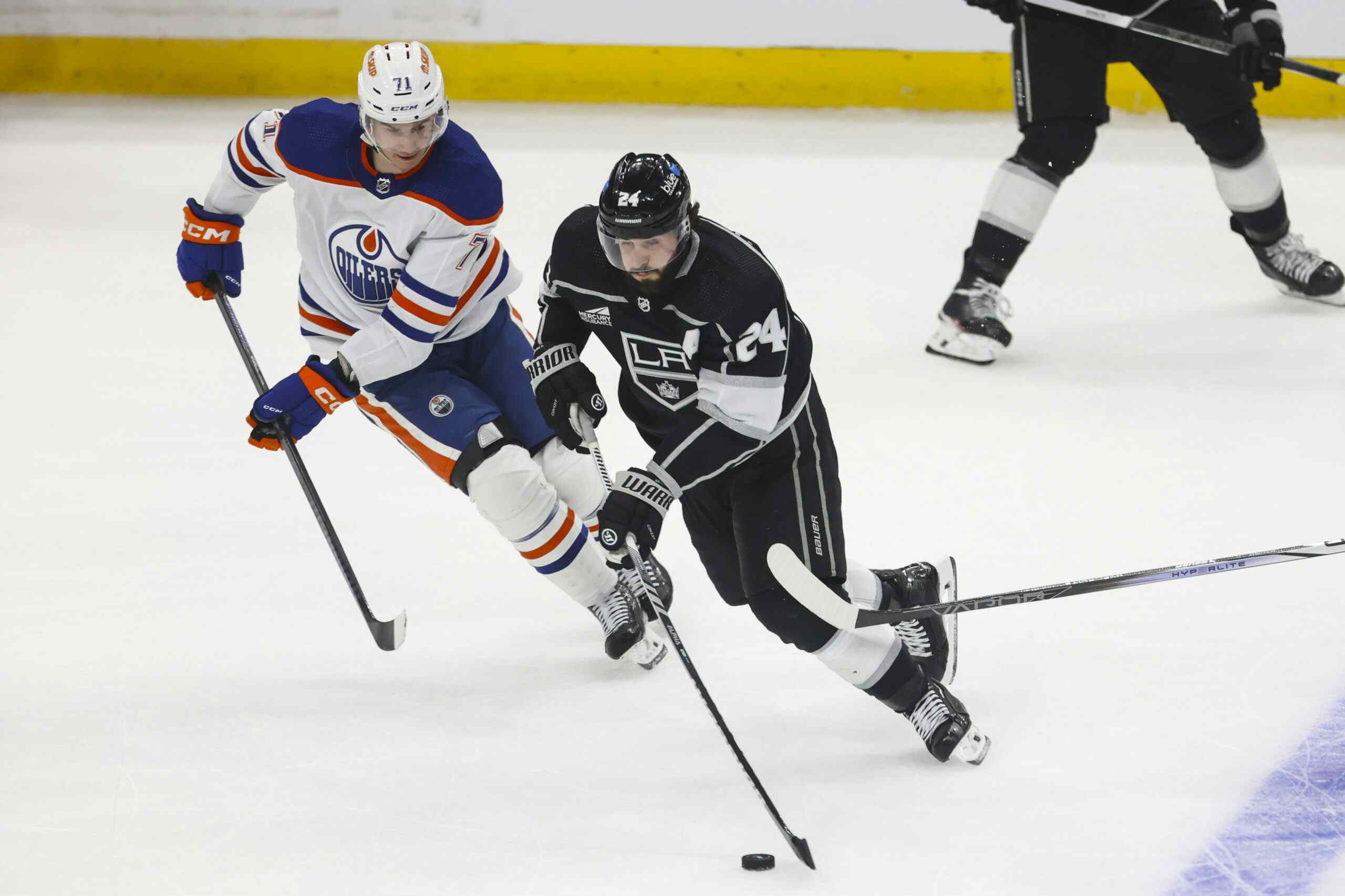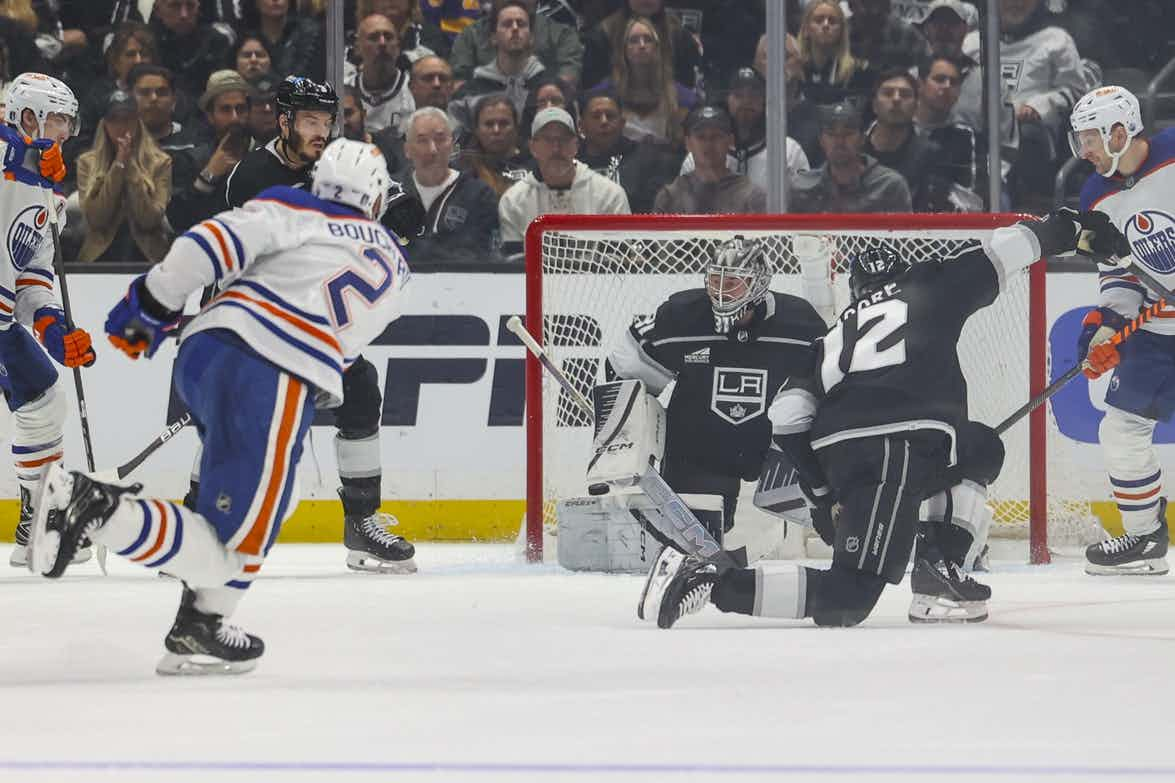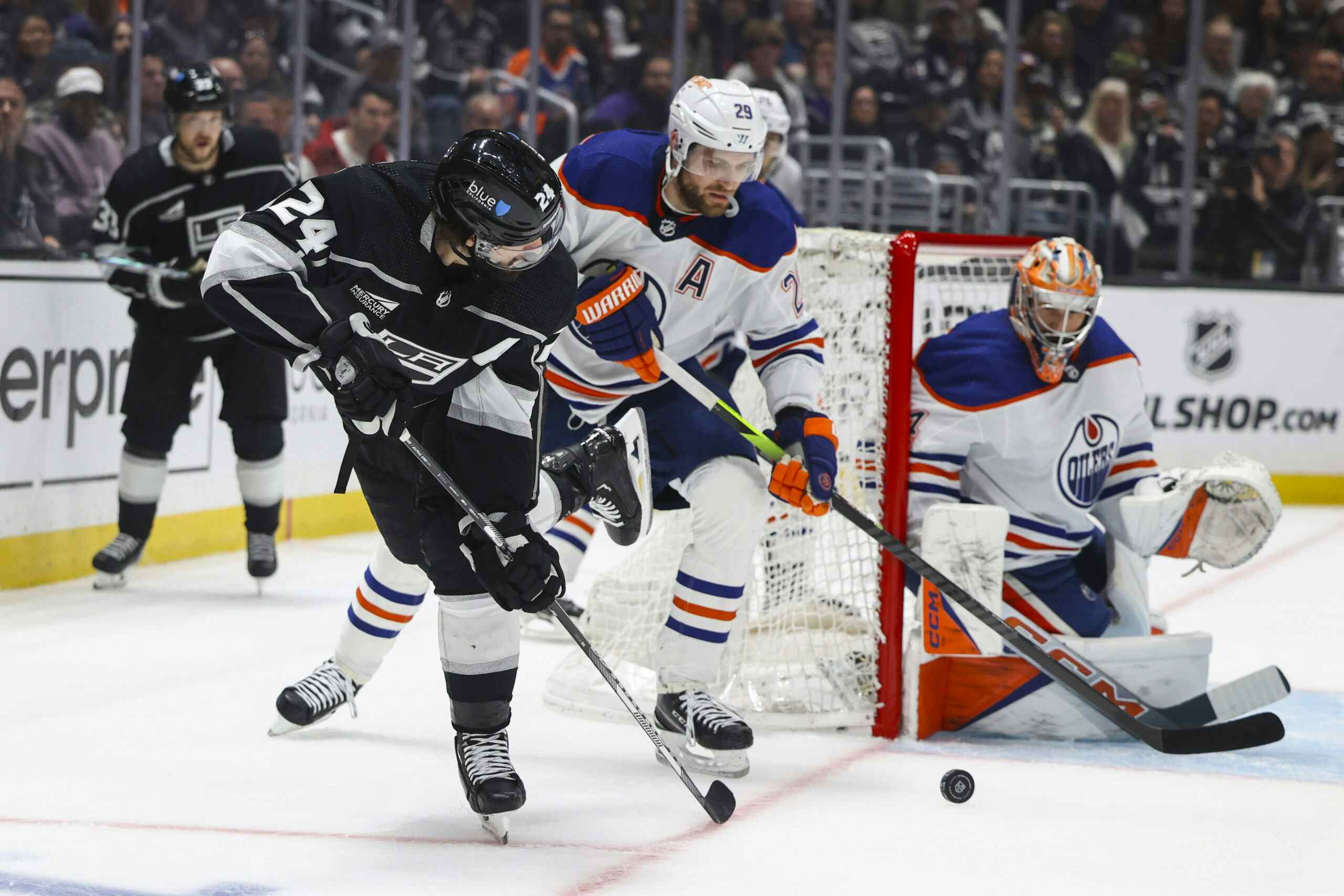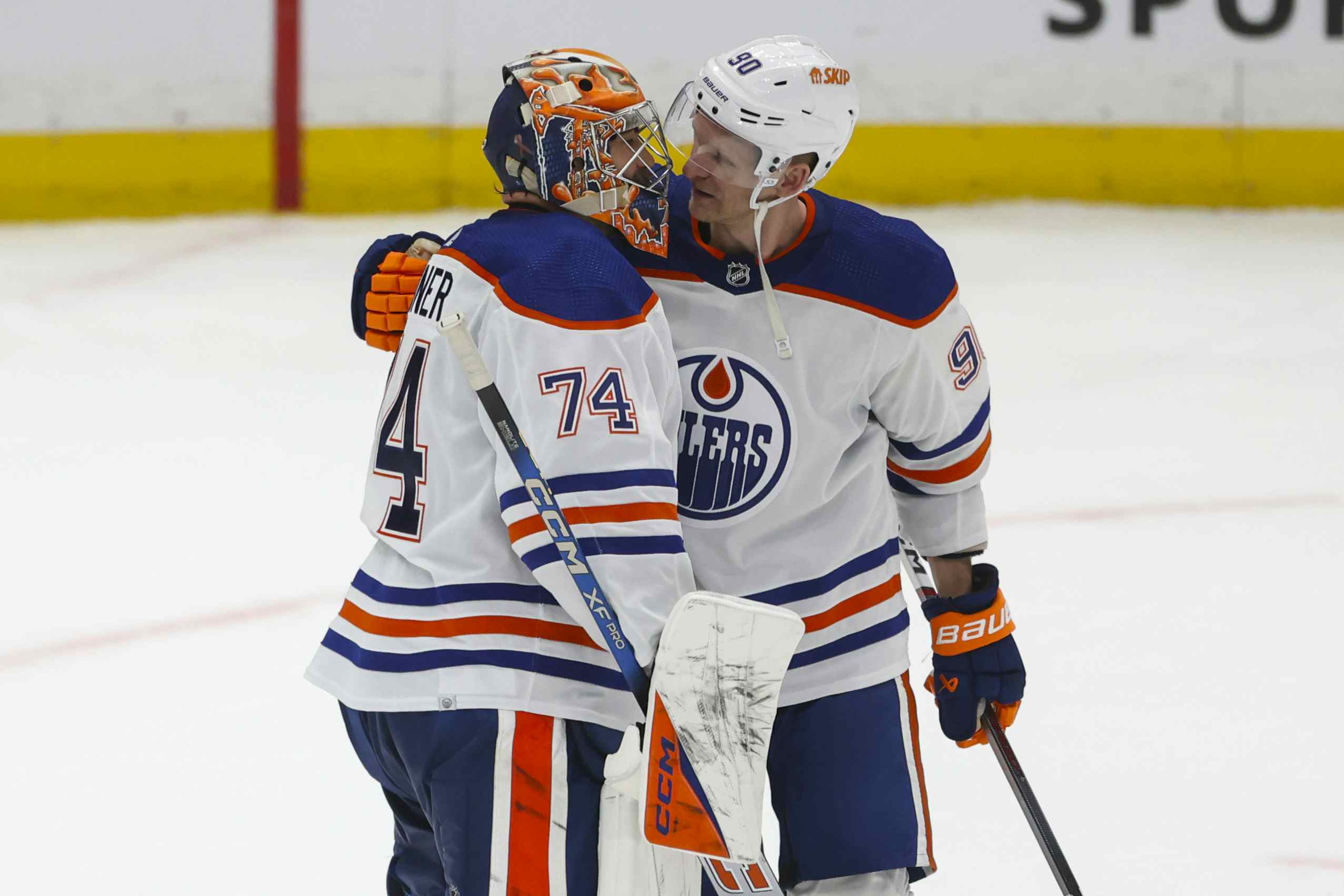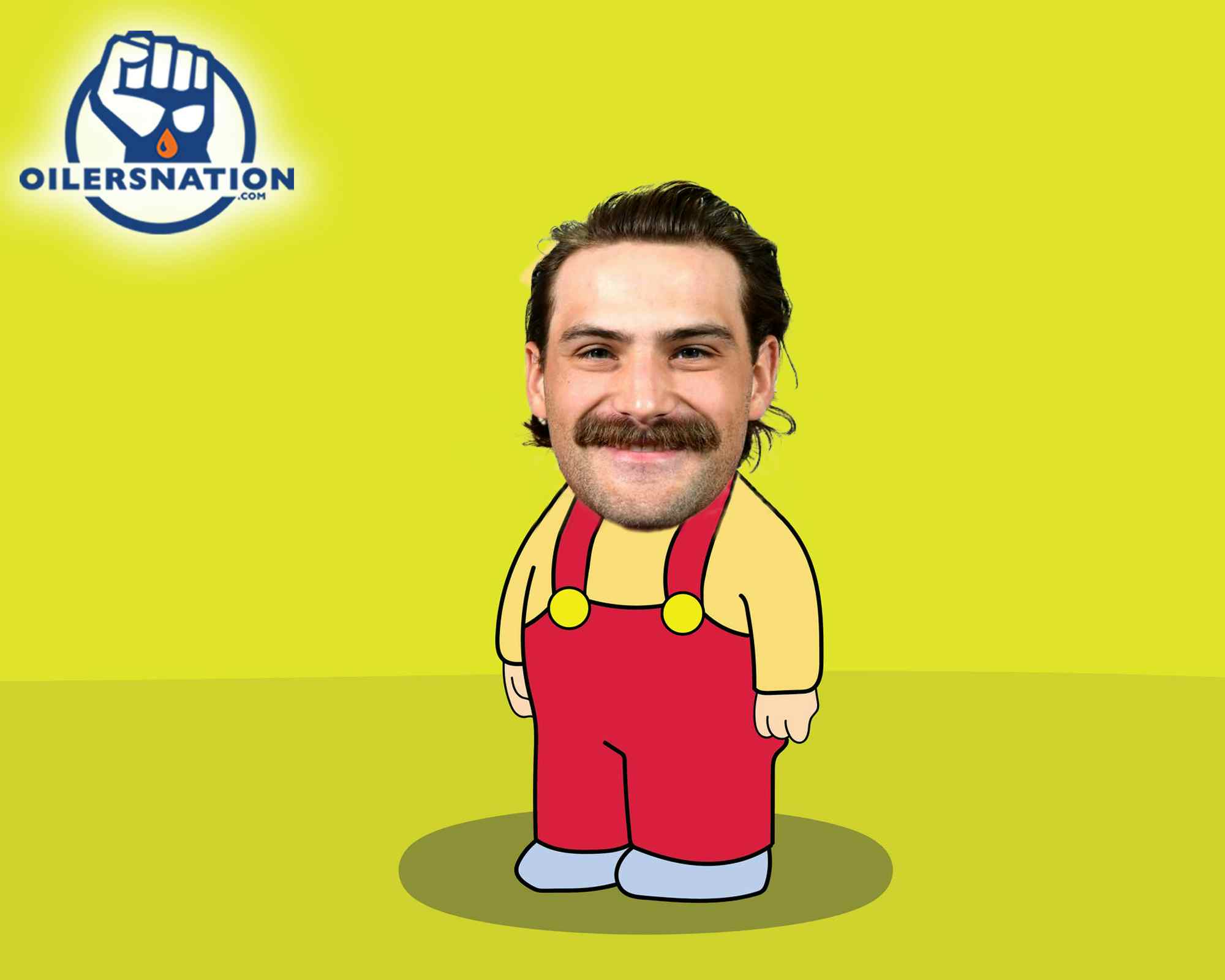Because It’s The Cap: Edmonton Oilers
By Cam Lewis
7 years agoOver the next month, we at NHLnumbers are going to be taking a look at where each team in the league currently stands based on what we learned from them last season, and where they realistically can and should go this summer with the resources and cap space they have.
It’s pretty easy to look at the Edmonton Oilers’ 2015-16 season and say it was a complete disaster. I mean, you wouldn’t be wrong to view it that way, considering the fact they finished second last in the league standings and allowed their playoff drought to reach a decade in length. Their 31 wins are barely an improvement from all the way back in the 2009-10 season when they had 27, which is when they officially started tanking and their oil change began.
If you told Oilers fans after they drafted Taylor Hall first overall that summer that the team would be fooling around in the league’s basement with a 31-43-8 record six seasons later, they most certainly wouldn’t have believed you. If they did believe you, they probably wouldn’t have assumed the rebuild was a total dud, but instead, the season’s failure was the result of unfortunate circumstances. And that wouldn’t be entirely wrong.
I’m not going to make excuses for this organization — because let’s be honest, they’re nowhere near where they should be considering they’re six (official) years deep into a rebuild with four first overall picks in their cupboard — but a big reason why last year’s group did as poorly as it did ultimately comes down to injuries. Their top two centres, Connor McDavid and Ryan Nugent-Hopkins, each missed significant time with two different serious injuries, Oscar Klefbom, their best defenceman, missed more than half of the season, and solid depth players Beniot Pouliot and Brandon Davidson also each missed nearly 30 games.
Would they have been a playoff team with better injury luck? I really doubt it. But if McDavid, RNH, and Klefbom all play somewhere near a full season, the Oilers aren’t finishing with the second worst record in the league.
Roster Analysis
Despite the frustrating and difficult-to-watch season that transpired this year in Edmonton, there are quite a few things to like about this team.
Obviously Connor McDavid had a phenomenal rookie season, leading the team in points-per-game and corsi for percentage in the 45 games he suited up for. Taylor Hall was excellent and will most certainly continue to be as such, while Leon Draisaitl showed flashes of brilliance after a disappointing rookie season. Patrick Maroon and Zack Kassian, both mid-season acquisitions, provided some necessary strength up front. When they were healthy, Jordan Eberle and Beniot Pouliot were producing at a solid level, and Ryan Nugent-Hopkins, also when healthy, established himself pretty easily as the team’s the best two-way forward. They have a reasonable start to a good defensive group with Andrej Sekera, Oscar Klefbom, and Brandon Davison, plus a couple of interesting prospects in Darnell Nurse and Griffin Reinhart, who all thrive in more of a shut down, defensive zone role. Also, Cam Talbot had the first good season by an Oiler goalie in, geez, I don’t even know how long despite playing behind a pretty thin blue line.
It shouldn’t come as much of a surprise at all, but the biggest issue this team has moving forward is their blue line. Specifically, their defencemen provide virtually zero value offensively, making it difficult for their strong group of forwards to do the things they do best. I mean, Oscar Klefbom is the only Oilers defenceman who provided any kind of offence, and he only played 30 games, so it’s difficult to say whether that’s actually a part of his game, or if it was an abnormality. When looking at the NHL’s leaders among on-ice shot attempts for per hour, you have to do a lot of scrolling to get to any Oilers. And even then, when you look at with and without you numbers, it becomes pretty clear that the offence generated is the work of the team’s top forwards in that the defencemen’s possession numbers take a pretty big hit when they aren’t on the ice with them.
That also leads into the other issue with the Oilers roster, which is depth forwards. The common rhetoric surrounding this team is that players like Hall and RNH aren’t getting the job done, which really isn’t the case. When they’re on the ice, the Oilers are generally the better team, but unfortunately, their top-six forwards can’t play 60 minutes a night. Edmonton’s revolving door of bottom-six forwards, Lauri Korpikoski, Mark Letestu, Anton Lander, and so on were completely eaten alive on the ice in terms of possession, generating scoring chances, and, of course, scoring, largely because they were frequently hemmed in their own zone. I mean, beyond Hall, McDavid, Pouliot, RNH, Draisaitl, and Teddy Purcell, (and Patrick Maroon, who basically filled his role after the trade deadline) their bottom-six forwards only scored 44 goals combined, and a decent chunk of them came either on the power play or when playing in a top-six role due to Edmonton’s injury glut.
So what we have here is a team loaded with talent up front, but a problem with depth as their third and fourth lines generally gave them nothing on a night to night basis. The team needs a lot of work on the blue line, largely in puck moving and offence generating defencemen, and possibly another right-handed shot who can form a legitimate shut down pairing. Thankfully, the Oilers have a lot of assets at a position of strength at their disposal, so these holes can most certainly be filled.
Cap Situation

For an expanded chart with all players the organization has signed, visit nhlnnumbers.com
The Oilers already have a good chunk of their roster fleshed out right now, with 12 forwards, six defencemen, and two goalies from last year’s roster signed into next season with roughly $10 million in cap space to work with (a little bit more if Andrew Ference gets placed on the LTIR, but I doubt they’ll take the risk of spending to the upper limit with that in mind). So if they’re going to mix some things up, it’s definitely going to have to be through trade. This isn’t really a roster that you can make significant changes to via the free agent market, because for each major player they add, they’re going to also need to get rid of a contract to make it work financially and in terms of 23-man roster space.
Also, another thing Peter Chiarelli and Co. need to keep in their minds is Connor McDavid and the end of his entry-level contract and how that’s going to work well into the future. McDavid will need a new deal for the beginning of the 2018-19 season (obviously it’s going to be worked out before that), and as of right now, they already have $35.8 million invested in seven players heading into that season. And that’s not counting Leon Draisaitl, Brandon Davidson, Darnell Nurse, or anybody else who will need a new deal sorted out before then, too, of course.
So the theme with the Oilers is pretty obvious, really. You have Connor McDavid on your roster right now at a very, very cheap price. Not only do you need to capitalize on these bargain years while you can, you also need to be smart about it so that you don’t end up in a situation where it becomes difficult to fork over the money he’s going to command on his next contract. Of course, it would take some monumentally horrible cap management to allow that to happen, but let’s not forget what it was that got Chiarelli fired from his last job in Boston.
A question was brought up in the comments about how I got to that $10 million figure. Let me clarify.
I made my projection while considering the LTIR (Ference) and the bonus cushion pushing them to roughly $10 million in open cap space, depending on where the cap ceiling ends up, which hasn’t been announced yet. Performance bonuses count against the salary cap, but a team can exceed the salary cap due to performance bonuses by the maximum performance bonus cushion amount of 7.5% of the upper limit.They certainly won’t spend all of that ~$10 million, of course, but it’s more of a rough number to give an idea of how far they can go this summer (not very), which illustrates the point that changes will need to be made via trade.
Offseason Plan

In the roster chart above, I identified the major holes to fill this summer for the Edmonton Oilers as being half of a top four on defence, and two-thirds of a legitimate third line. They also have a few other minor holes I won’t worry quite as much about, like seventh defenceman and backup goalie, and then, depending on who eventually gets shipped out in a deal for quality defencemen, other holes will open up too. I also left a few players off this chart for some different reasons. First, Nail Yakupov isn’t there because he’s requested a trade, and I’m assuming he won’t be back with the team next year. I also didn’t include Lauri Korpikoski or Mark Fyane, because both players have contracts the Oilers should be looking to dump in order to gain capacity and flexibility to make other improvements. And finally, I didn’t include Darnell Nurse or Laurent Brossoit, because if all goes well, they’ll be able to develop in the AHL next season.
Let’s start with the two defencemen. The only name from the free agent list that really makes much sense as a fit is Jason Demers. He’s a right-handed shot, is turning 28 years old this summer, and is versatile enough to be used in a variety of different roles. When you look at his with and without you stats, virtually everybody on the Stars had better possession numbers when they played with him than they did when they were with somebody else, so his performance wasn’t just being driven by playing on a strong offensive team. Of course, Demers isn’t some unknown mystery player, and I imagine a handful of teams are going to be calling to inquire about him this summer, so I wouldn’t be surprised to see him get a contract similar to what Jeff Petry got ($5.5M/6yrs) in Montreal.
Even if the Oilers sign Demers, it still wouldn’t address their major hole of puck moving defenceman, which, again, will need to be acquired through trade. The first name that comes to mind for me is Justin Faulk, who’s emerged as the Carolina Hurricanes’ best defenceman and is signed to a beautiful $4.833 million deal for the next four years. Over the past two seasons, Faulk has produced 0.60 and 0.58 points-per-game and a 54.4 and 52.3 Corsi For percentage while logging just a shade over 24 minutes per night in a variety of situations. Why on earth would the Hurricanes give this guy up? Well, they wouldn’t really be giving him up, per se. Instead they would be using him as a chip to acquire another really good player to fill a position of need up front. So if the Oilers are calling about Faulk, Carolina is most certainly going to be asking for Ryan Nugent-Hopkins or Taylor Hall (likely the former). It’s a really, really tough deal to pull the trigger on, but Faulk is a damn good player, and this makes a lot of sense for both teams.
If either side decides they aren’t willing to pull the trigger on a Faulk deal, the logical fallback net for the Oilers would be either Colorado’s Tyson Barrie or Anaheim’s Sami Vatanen. Barrie is currently an RFA coming off of a bridge deal that paid him $2.6 million annually over two years, and, based on his production (0.64 points-per-game) over the past two years, it’s expected he could command upwards to $6 million per year on a long-term deal. It’ll certainly cost a lot less to acquire Barrie than it would to get Faulk, but he doesn’t come with the same cost-controlled contract, making him a much more risky commodity. Vatanen is also an RFA this summer, has similar production numbers to Barrie, and is a likely candidate to be moved because the Ducks internal budget restrictions and the impending threat of an expansion draft.
After that, the next wave of fallback nets are James Wisniewski and Dennis Wideman who represent a couple of buy-low options as right-handed shooting defencemen who have a history of producing offence. Both are one year from free agency, and probably wouldn’t cost much in terms of assets to acquire in a trade, but neither option is good enough to anchor a top pairing. That said, they’re both significantly better than what the Oilers have right now.
The third line isn’t quite as difficult or dire right now as the holes on defence. I marked down two question marks, but it’s kind of up in the air, as Patrick Maroon may need to join the top six if somebody like Pouliot or Eberle is dealt, or someone internally like Zack Kassian, Anton Slepyshev, Jujhar Khaira, or Drake Caggiula could fill the role.
Regardless, what the Oilers absolutely lack is a good third line centre who doesn’t get completely eaten alive. Look at the final four teams in the playoffs. St. Louis has Alex Steen, Pittsburgh has Nick Bonino, Tampa Bay has Brian Boyle, and San Jose, well, they have Chris Tierney, who isn’t a great example for this point, but the first three are all responsible defensively, but can chip in and generate chances offensively, too.
This hole could easily be filled if they choose to use Leon Draisaitl as a centre, but that opens up a few more potential issues. First, if they trade somebody like Eberle or Pouliot to fill a hole on defence, they’re probably going to want Draisaitl to fill in as a top-six winger. Also, simply using Draisaitl in that role doesn’t really fix the overarching problem of forward depth, such as we saw last year when both McDavid and Nugent-Hopkins were injured.
In terms of centres, Shawn Matthias and Mike Santorelli are both nice options available through free agency this year, as they both have a history of producing decent offensive and possession numbers in depth roles. Lee Stempniak has always been a solid producer for whoever picks him up at the end of the summer, P.A. Parenteau was very useful for the Leafs this year in a depth offensive role, and Jamie McGinn, Kris Versteeg, and Chris Stewart are some other names out there who would represent a pretty significant upgrade on what the Oilers have right now, and can slide up and down the lineup into a variety of roles.
Like I said at the beginning of the section, planning the Oilers offseason is a pretty dynamic thing, in that new holes are likely to open when others are filled. I’m expecting Chiarelli to sell from a position of strength, which is skill on forward to deal with the catastrophe on the back end, and if I had to venture a guess, I would expect to hear Benoit Pouliot and Jordan Eberle’s names out there (along with the team’s fourth overall pick, and Nail Yakupov, who’s admitted to requesting a trade) as trade bait.
I don’t know who will end up being moved, but no matter what, if they’re going to make the significant upgrades to their blue line and have money left over to add depth to their forward core, one of their top-six forwards is going to have to be packaged out. Okay, yeah, obviously that isn’t something you want to do, because good, skilled forwards are hard to come by, but as we know, so are good, skilled defencemen, and you have to give to get.
Moving the fourth overall pick alone might get you a good player, but then you’re also likely going to be stuck in a situation where you’re damn near out of cap space and you aren’t able to add any of the middle-tier forwards in free agency. Also, another thing to remember is how important it is to have cheap talent developing in your system when you’re a competitive team. If you look at all of the teams who have won recently, they all have players on entry level deals.
I’m not sure how exactly it’ll pan out, but if the Oilers can acquire two of the defencemen and two of the forwards I mentioned, they’ll be in great shape heading into next season.
Conclusion
This is a really important offseason for the Oilers, and fortunately for them, it features all of the possible pieces they’re going to need in order to boost their team from mediocrity into relevance. That said, it’s also going to require them sucking it up and pulling the trigger on a difficult move, because not all of the solutions exist in free agency.
I alluded to this earlier, but it’s really, really important to take advantage of Connor McDavid’s cheap years, because not too long from now, he’s going to be commanding a massive salary. Obviously the Oilers will be happy to pay it, because it’ll mean that he’s established himself as one of the best players in the league if he’s commanding that kind of money, but they aren’t going to have an elite core of young forwards signed at a combined $25 million forever, so the time to capitalize on this group is right now.
They already have pretty much a full roster, leaving them with roughly $10 million to spend on upgrades, so some pieces are going to have to be moved around if they’re going to manage to fill all the holes they need to in order to become a competitive team.
Using the fourth overall pick to acquire a defenceman is all fine and dandy, but it’s going to leave them with not a hell of a lot of money to fill other holes. It’s also important to remember that the player selected fourth overall this June probably won’t help them this upcoming season, it never hurts to have good talent on entry-level contracts when your team is competitive. Obviously nobody wants to trade someone like Jordan Eberle or Ryan Nugent-Hopkins, because they’re damn good players, but that’s the reason another team will be willing to pay a premium for them in return. Also, moving one contract for another gives the team more flexibility in free agency to add depth to the team in the short-term, which is certainly necessary for this group right now.
There’s pros and cons to whichever route they take, of course, but however Peter Chiarelli and Co. decide to go about doing it, this is an offseason where the Oilers absolutely need to be aggressive and creative, because this group they have right now isn’t going to be young and cheap forever, and they’re actually a lot closer to being competitive than you might think at a glance.
Recent articles from Cam Lewis


